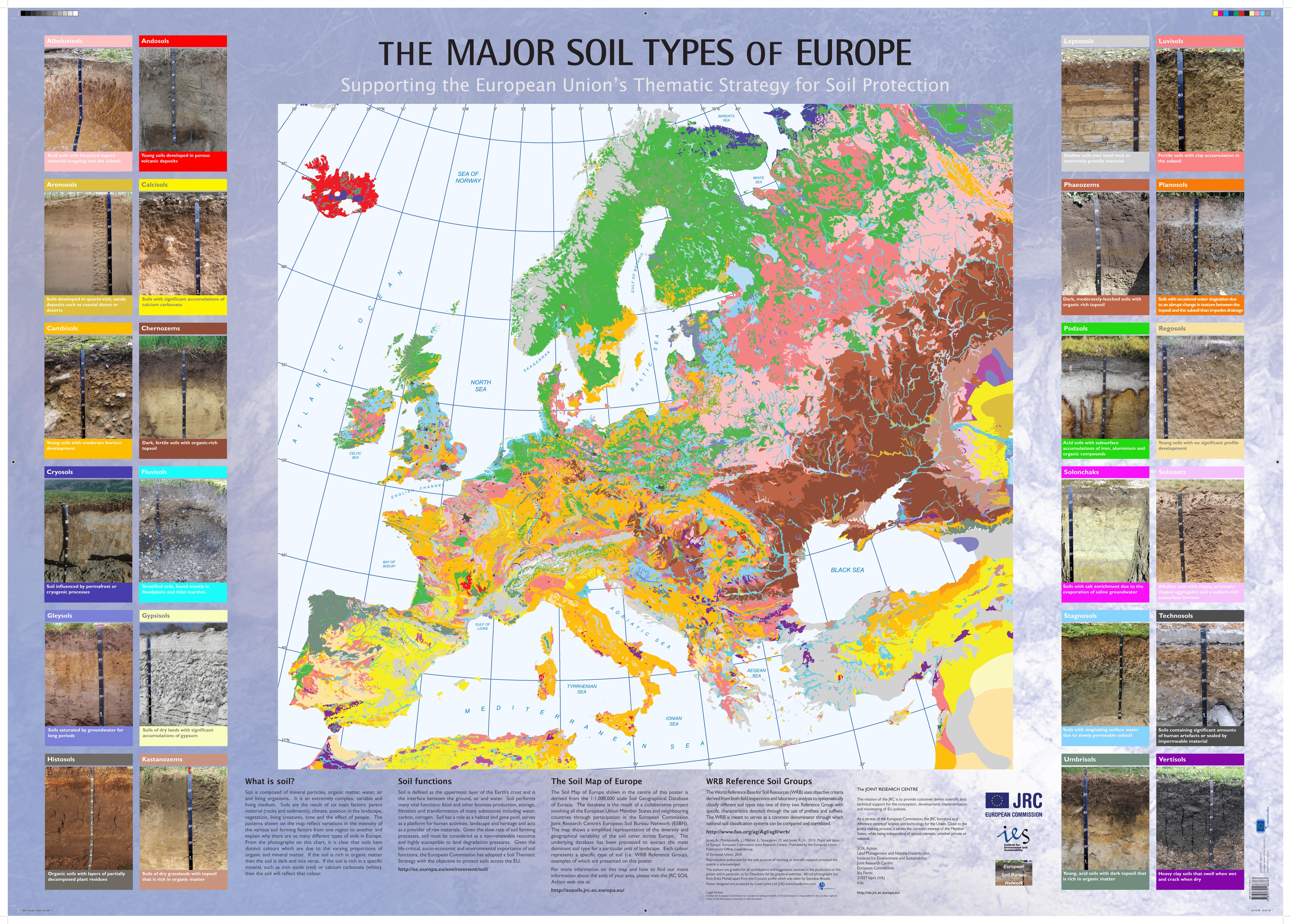European Soil Map


Alex Cartwright
Senior Cartographer & GIS Specialist
Alex Cartwright is a renowned cartographer and geographic information systems specialist with over 15 years of experience in spatial analysis and data...
Geographic Analysis
What This Map Shows
The European Soil Map serves as a comprehensive visualization of the diverse soil types across the continent, highlighting critical factors such as soil composition, fertility, and texture. This detailed infographic goes beyond mere aesthetics, providing essential insights into how soil characteristics vary across different regions. Understanding soil types is crucial for agriculture, environmental policies, and land use planning, which makes this map not just informative but an invaluable tool for decision-makers and researchers alike.
Deep Dive into Soil Types in Europe
Soil is more than just dirt; it plays a vital role in supporting ecosystems, influencing agriculture, and determining land use practices. The European Soil Map categorizes soils into several types, each with distinct properties and uses. For instance, the fertile alluvial soils found along river valleys, particularly in regions like the Danube and Rhine, are renowned for their agricultural productivity. These soils are rich in nutrients, making them ideal for staple crops such as wheat, corn, and various fruits.
Interestingly, the Mediterranean region showcases a different soil profile, primarily characterized by its limestone and clay soils. These soils, while often less fertile than alluvial soils, support diverse ecosystems and are well-suited for crops like olives, grapes, and citrus fruits. This variation is largely due to the region's unique climate, which includes hot, dry summers and mild, wet winters.
Sandy soils, prevalent in parts of northern Europe, offer another layer of complexity. Although they have excellent drainage properties, they tend to be less fertile. However, they can be highly productive for specific crops that thrive in these conditions, such as root vegetables. In contrast, the heavy clay soils found in central and eastern Europe present challenges for agriculture due to their poor drainage and tendency to compact, which can hinder root growth.
Additionally, the map highlights the importance of soil organic matter, which is crucial for maintaining soil health and fertility. Soils rich in organic matter tend to support better crop yields and are more resilient to climate change. The European Union has recognized this importance and is working towards sustainable soil management practices to combat issues like soil degradation and erosion.
Regional Analysis
Breaking down the map regionally reveals fascinating contrasts. For instance, the northern regions of Scandinavia feature podzol soils, which are acidic and often lack nutrients. These soils are less suitable for agriculture, leading to a reliance on extensive forestry and reindeer herding. In stark contrast, southern Europe’s Mediterranean soils are adapted to drier conditions, supporting diverse agricultural practices.
Moving to Western Europe, countries like France and Germany benefit from a blend of fertile loamy and clay soils, which support a robust agricultural sector. France, known for its wine production, utilizes its varied soil types to cultivate grapes that thrive in these distinct growing conditions. Meanwhile, the Netherlands showcases innovative agricultural practices to maximize productivity on its sandy soils, utilizing advanced irrigation and soil management techniques.
Eastern Europe presents its own unique challenges and opportunities. The vast steppe soils found in regions like Ukraine are some of the most fertile in the world, often referred to as ‘black earth’ due to their rich organic content. These soils support large-scale agriculture, particularly grain production, making Ukraine a significant player in global food supply chains.
Significance and Impact
Understanding the various soil types across Europe is not just an academic exercise; it has real-world implications. Soil health directly affects food security, environmental sustainability, and even climate resilience. With increasing pressures from urbanization, climate change, and intensive agricultural practices, monitoring soil health has become critical.
Furthermore, as Europe seeks to transition to more sustainable agricultural practices, the knowledge derived from this soil map can guide policies and practices aimed at preserving soil integrity. For example, initiatives aimed at reducing soil erosion and enhancing organic matter can improve agricultural resilience against climate variability.
Looking ahead, trends indicate that soil management practices will be crucial in adapting to climate change. As weather patterns shift and extreme weather events become more common, ensuring that soils are healthy and productive will be vital for maintaining food security across Europe.
In conclusion, the European Soil Map is more than just a depiction of soil types; it is a representation of the intricate relationship between land, agriculture, and the environment. By understanding the soil we stand on, we can better prepare for the challenges of tomorrow, ensuring a sustainable future for generations to come.
Visualization Details
- Published
- August 18, 2025
- Views
- 116
Comments
Loading comments...